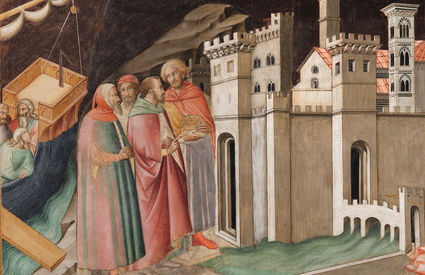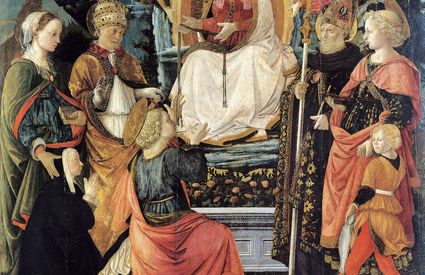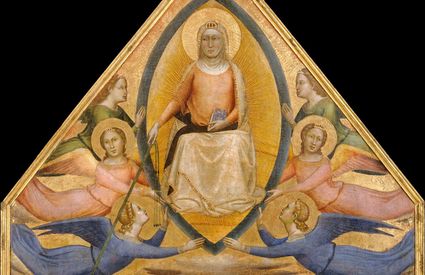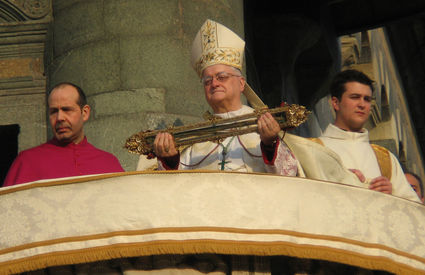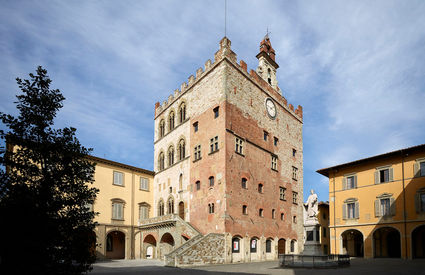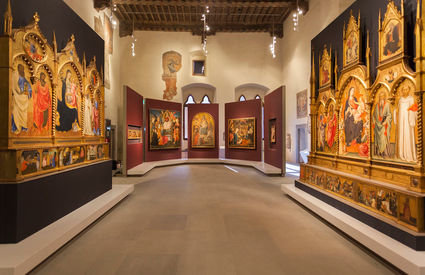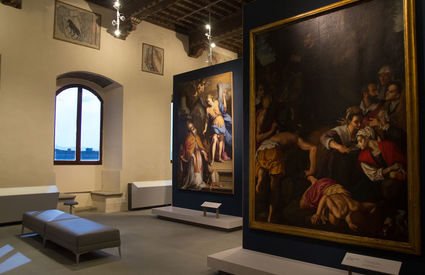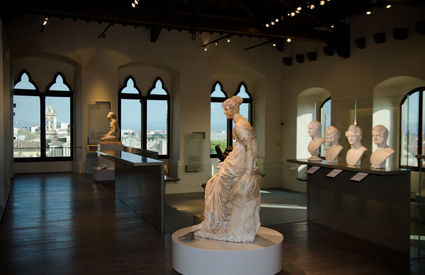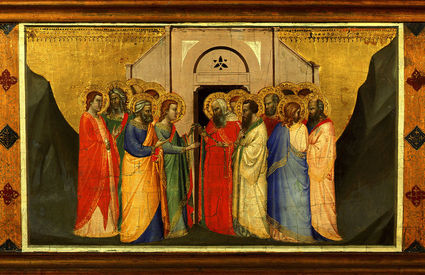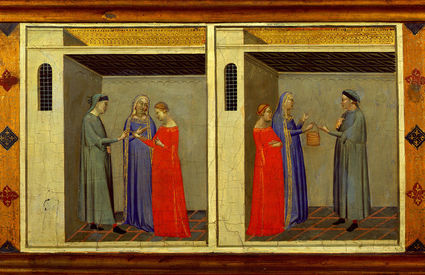Prato
Connected by a “Cintola”
Bernardo Daddi’s “Assumption” and the identity of a city
Connected by a “Cintola”
Bernardo Daddi’s “Assumption” and the identity of a city
Connected by a “Cintola”
Prato’s spiritual and civic identity revolves around the “Cintola,” or belt, a relic that legend says is connected to the Virgin Mary and comes from Jerusalem in the 12th century, brought by the merchant Michele Dagomari. It’s difficult to say just how valid the historic linkings to Mary are, but the cintola is most certainly an extraordinary symbol for the people of Prato. Even the local architecture is connected to its presence. In fact, the original 15th century positioning of the Donatello and Michelozzo pulpit in the Prato Cathedral was designed precisely so that pilgrims could participate in the “ostensione” – or witness the display of the belt, that is.
But the belt is housed in the Agnolo
Gaddi-frescoed chapel, a strip of very fine green wool and embroidered in
gold thread. The frescoes and Giovanni
Pisano’s delicate statue of the Madonna are the center and the heart of
this chapel. The grand fresco cycle with
the stories of Saints Stephen and John the Baptist, one of the best
examples of Filippo Lippi’s work,
complete the Cathedral, a precious treasure trove of relics.
Palazzo Pretorio: a museum for the city
A silent witness to the city’s history is the building that houses the Palazzo Pretorio Museum, which narrates more than 700 years of history. In the 19th century, due to persistent intense problems, it risked being demolished, but after major restorations, it eventually became the headquarters of the Galleria Comunale in 1912.
A final restoration, which began in 1998 and concluded in 2013, re-established its role: a protector of artworks and stronghold of memories and historic events. Palazzo Pretorio holds a collection of masterpieces formed over the centuries thanks to artists like Bernardo Daddi, Giovanni da Milano, Donatello e Filippo Lippi, Filippino Lippi andLorenzo Bartolini, whose sculptures on the third floor enter in dialogue with those of Jacques Lipchitz, a major figure of the 20th century. One area is completely dedicated to the Sacra Cintola (the same sacred belt). The rooms themselves are works of art, due to their architectural quality and the wealth of frescoes.
Bernardo Daddi's altarpiece
Sometimes a man’s ingenuity calls for pushing the boundaries of an art form in order to expand its horizons. This seems to be what Bernardo Daddi was attempting with his “painted apparatus," that famous altarpiece of his; his panels narrate the story of the Cintola’s journey and its arrival in Prato, paralleling the movement of the body of Saint Stephen from Jerusalem to Rome, and ending with the assumption of the Madonna, who gives the relic to Saint Thomas. Following Bernardo Daddi’s “pre-cinematographic” construction of narrative, iconography associating the death of the Virgin with her assumption to heaven became common in Tuscany.


